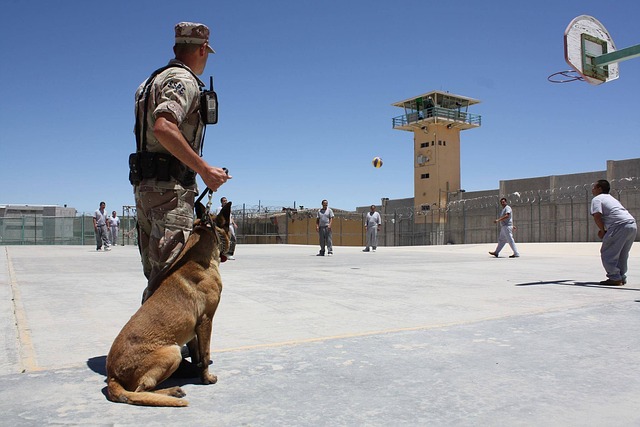Rural communities face unique challenges in DUI (Drunk Driving Under Influence) prevention due to limited law enforcement resources, vast distances, and lower population densities. Technological advancements offer solutions, including data-driven approaches, smart sensors for traffic monitoring, AI analytics for behavior detection, and digital awareness campaigns tailored to rural needs. GPS tracking has proven effective in remotely monitoring high-risk drivers, reducing repeat offenses. Data analytics helps identify hotspots for proactive resource allocation. Engaging local residents in tech implementation ensures culturally sensitive solutions, fostering trust and community buy-in for enhanced safety without external imposition. Collaborative tech integration strengthens legal systems, boosts community resilience, and improves rural DUI prevention efforts.
In the realm of rural community safety, addressing challenges like drunk driving (DUI) prevention is paramount. This article explores tech solutions that future-proof law enforcement strategies in these areas, focusing on GPS tracking and data analytics for DUI prevention. We delve into how digital innovation, community engagement, and collaborative implementation can enhance rural law enforcement, ultimately reducing high-risk behaviors and ensuring longevity in safety measures.
- Understanding Rural Community Challenges: The DUI Prevention Conundrum
- Technology's Role in Enhancing Rural Law Enforcement Strategies
- Future-Proofing Solutions: Embracing Digital Innovation for Longevity
- GPS Tracking and Its Impact on DUI Prevention: A Case Study
- Data Analytics: Unlocking Patterns to Target High-Risk Areas
- Community Engagement and Collaborative Tech Implementation
Understanding Rural Community Challenges: The DUI Prevention Conundrum

Rural communities face unique challenges when it comes to DUI (drunk driving) prevention due to limited resources and accessibility issues. The vast distances and lower population densities in these areas often mean fewer law enforcement officers, making it harder to conduct regular patrols and deter potential drunk drivers. Additionally, rural residents may have less access to public transportation alternatives, encouraging more people to drive after consuming alcohol. This conundrum requires innovative tech solutions that can bridge the gap left by limited human resources.
Technological advancements play a crucial role in addressing these challenges. Implementing data-driven approaches and leveraging technology like remote sensing, AI-powered analytics, and advanced communication systems can enhance DUI prevention efforts. For instance, smart sensors deployed on rural roads can monitor traffic patterns and detect suspicious behavior, alerting authorities promptly. Moreover, digital awareness campaigns tailored to the unique needs of rural communities can educate residents about the dangers of drunk driving and promote responsible behavior.
Technology's Role in Enhancing Rural Law Enforcement Strategies

Technology plays a pivotal role in enhancing rural law enforcement strategies, especially in areas with limited resources and sparse populations. By leveraging tech solutions, rural communities can significantly improve their DUI (Driving Under the Influence) prevention efforts. For instance, advanced surveillance systems equipped with AI-powered image recognition can monitor highways and detect suspicious behavior or vehicles, enabling swift action to deter intoxicated driving.
Furthermore, digital communication platforms facilitate real-time coordination among law enforcement agencies, allowing them to share intel and respond quickly to incidents. This interconnectedness is crucial for addressing the unique challenges faced by rural communities, such as limited access to transportation and scattered population centers. Through these tech-driven initiatives, rural areas can implement more effective DUI prevention programs, ensuring the safety of both residents and visitors alike.
Future-Proofing Solutions: Embracing Digital Innovation for Longevity

In today’s rapidly evolving digital landscape, future-proofing solutions are essential for rural communities aiming to prevent DUI (Drunk Driving Under Influence). Embracing digital innovation ensures that these communities stay ahead of the curve and maintain their safety measures against an ever-changing criminal justice system. By implementing tech-driven strategies, rural areas can enhance their DUI prevention efforts and create a more robust, resilient framework.
For instance, leveraging advanced data analytics and AI (Artificial Intelligence) can help identify patterns and trends in DUI incidents, allowing for proactive policing strategies. Additionally, digital communication platforms facilitate quick dissemination of critical information to the public, raising awareness about the dangers of drunk driving. These innovative solutions not only strengthen rural communities’ ability to combat DUI but also contribute to a broader goal of building a safer, more connected society.
GPS Tracking and Its Impact on DUI Prevention: A Case Study

In rural communities, where traditional policing resources may be scarce, GPS tracking has emerged as a powerful tool in DUI (Drunk Driving Under Influence) prevention. This technology allows law enforcement agencies to monitor and track individuals suspected of driving under the influence, providing a real-time solution to combat this pervasive public safety issue. By utilizing GPS devices installed in vehicles or carried by suspects, officers can remotely monitor their movements, ensuring they adhere to specified conditions such as remaining within a designated area or abstaining from driving.
A case study from a rural community in the United States highlights the effectiveness of GPS tracking in DUI prevention. The local law enforcement agency implemented a pilot program where high-risk drivers were fitted with GPS trackers. Results showed a significant reduction in repeat DUI offenses, as the constant surveillance deterred individuals from engaging in such behaviors. This innovative approach has the potential to transform rural community DUI prevention by offering a proactive and cost-effective strategy, ultimately enhancing public safety and reducing the burden on local law enforcement resources.
Data Analytics: Unlocking Patterns to Target High-Risk Areas

In the realm of rural community safety, Data Analytics plays a pivotal role in targeting high-risk areas for DUI (Driving Under the Influence) prevention efforts. By analyzing historical data and identifying patterns, law enforcement agencies can pinpoint hotspots where such incidents are more likely to occur. This strategic approach allows for the allocation of resources more efficiently, focusing on proactive measures rather than reactive responses.
For instance, by examining data on previous DUI cases, traffic stops, and demographic information, analytics tools can help identify specific routes or locations frequently associated with intoxicated driving. Armed with this knowledge, rural communities can implement targeted initiatives, such as increased patrols during peak hours or community education programs, to deter potential offenders and enhance public safety.
Community Engagement and Collaborative Tech Implementation

In rural communities, where resources can be scarce and populations more spread out, engaging local residents in tech implementation is key to successful future-proofing legal systems, particularly for DUI prevention initiatives. Collaborative efforts allow for a deeper understanding of the community’s unique needs and challenges, ensuring that technology deployed addresses these issues effectively. By involving residents, local authorities, and stakeholders from the outset, it becomes possible to tailor solutions that are not only technologically advanced but also culturally sensitive and practically applicable.
This approach fosters trust and buy-in, which is crucial for the acceptance and adoption of new technologies. In the context of Rural Community DUI Prevention, community engagement can lead to the development of innovative tools that leverage technology to enhance safety without imposing external solutions. Collaborative tech implementation, therefore, not only future-proofs legal systems but also strengthens community resilience and well-being.
Tech solutions offer a promising avenue for future-proofing rural community law enforcement, particularly in addressing DUI prevention. By leveraging digital innovation, such as GPS tracking and data analytics, law enforcement agencies can proactively target high-risk areas and enhance their strategies. Community engagement is key to successful implementation, fostering a collaborative environment that ensures solutions remain relevant and effective over time. These tech-driven approaches not only improve public safety but also showcase the potential for technology to revolutionize rural law enforcement, making it more efficient, accurate, and resilient in the face of evolving challenges.






